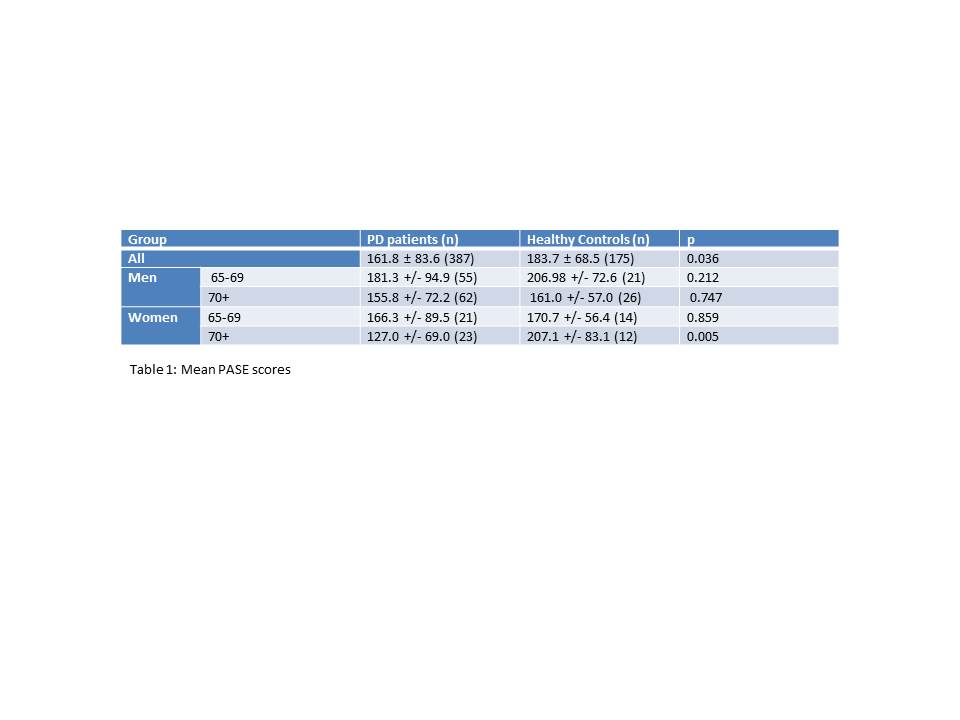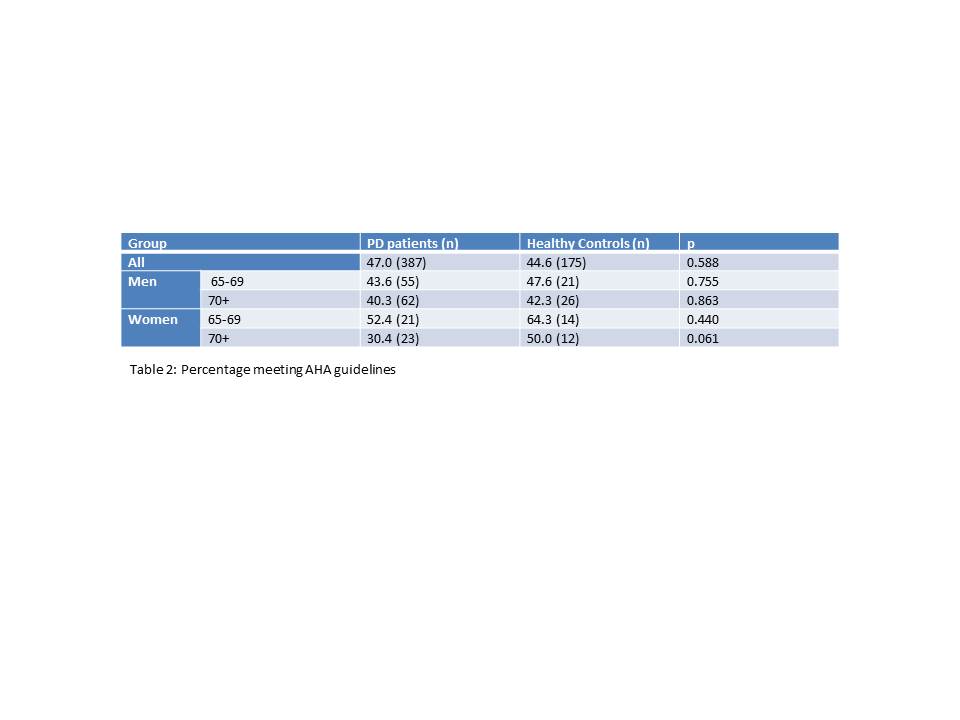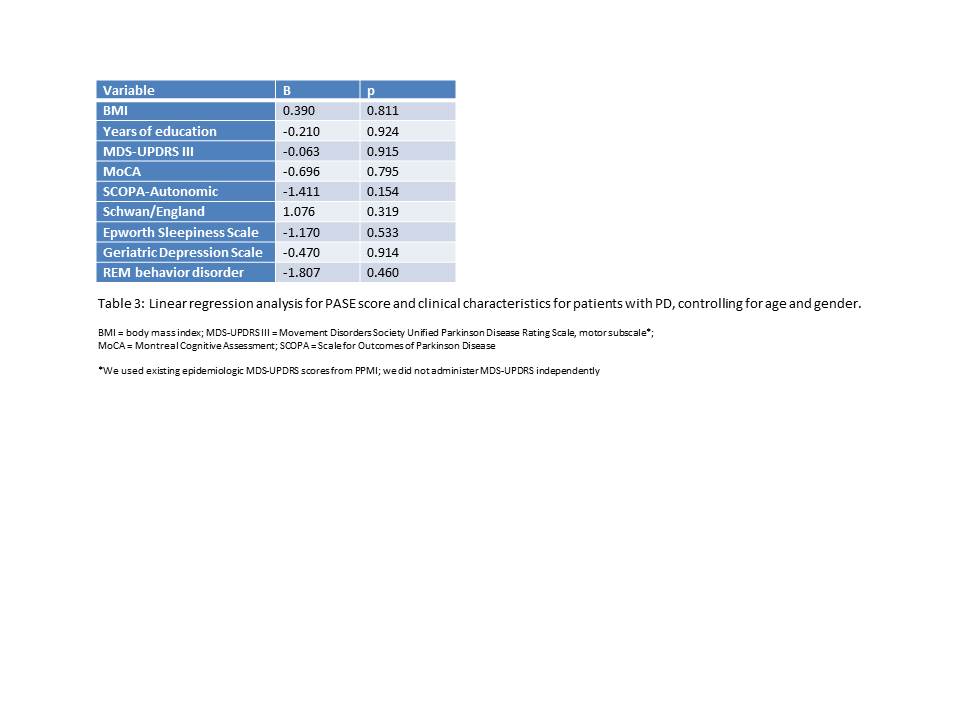Session Information
Date: Thursday, June 8, 2017
Session Title: Other
Session Time: 1:15pm-2:45pm
Location: Exhibit Hall C
Objective: To characterize physical activity habits in patients with early Parkinson disease (PD).
Background: Physical activity is an important therapy for PD as it may affect both symptoms and disease progression. The American Heart Association (AHA) recommends at least 150 minutes of moderate or 75 minutes of vigorous activity weekly for all adults[1]; however, little is known about activity levels in early PD.
Methods: We queried the Parkinson Progression Markers Initiative (PPMI) database for responses to the Physical Activity Scale in the Elderly (PASE)[2], a well-validated assessment in subjects older than 65. Because PASE scores were higher than published norms, we audited the data where possible to ensure proper scoring. Twenty percent of records were recoded due to incorrect assignment of activities but recoded scores did not differ significantly from non-recoded scores. For subjects over 65, we compared raw scores and percentage of individuals meeting AHA activity guidelines in PD patients and age- and gender-matched controls and examined associations between PASE score and clinical characteristics.
Results: Initial PASE score was lower for PD patients (N=161) than healthy controls (N=73) (161.8±83.6 vs 183.7±68.5, p=0.036), driven by females aged 70 and above [table 1]. Less than half of PD patients met AHA activity guidelines [table 2], and adherence declined with age, especially among women. After controlling for age and gender, there were no significant associations between PASE score and baseline clinical characteristics [table 3].
Conclusions: Most early PD patients, like healthy controls, are not compliant with AHA activity guidelines, highlighting the need to encourage exercise even in early PD patients. In particular, older women with PD may benefit from targeted interventions to increase physical activity. Although physical activity was not associated with baseline clinical characteristics, the longitudinal design of PPMI will allow future studies to examine the relationship between baseline physical activity and progression of PD.
References:
- Nelson ME, Rejeski WJ, Blair SN, et al. Physical activity and public health in older adults. Circulation 2007 Aug;116(9):1094-105
- Washburn RA, Smith KW, Jette AM et al. The Physical Activity Scale for the Elderly (PASE): Development and evaluation. J Clin Epidemiol. 1993 Feb;46(2):153-62.
Data used in the preparation of this article were obtained from the Parkinson’s Progression Markers Initiative (PPMI) database (www.ppmi-info.org/data). For up-to-date information on the study, visit www.ppmi-info.org. PPMI – a public-private partnership – is funded by the Michael J. Fox Foundation for Parkinson’s Research and funding partners; a list of the full names of all of the PPMI funding partners can be found at www.ppmi-info.org/fundingpartners.
To cite this abstract in AMA style:
S. Mantri, M. Fullard, J. Duda, J. Morley. Physical Activity in Early Parkinson Disease [abstract]. Mov Disord. 2017; 32 (suppl 2). https://www.mdsabstracts.org/abstract/physical-activity-in-early-parkinson-disease/. Accessed January 4, 2026.« Back to 2017 International Congress
MDS Abstracts - https://www.mdsabstracts.org/abstract/physical-activity-in-early-parkinson-disease/



